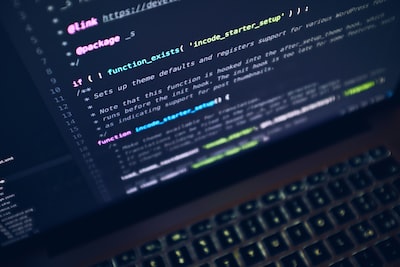AI impersonation, the myth that looms over the realm of artificial intelligence development, has become a pervasive concern among tech experts and enthusiasts. The ability of AI systems to flawlessly mimic human behavior and speech has raised alarming questions about identity theft, deception, and privacy infringement.
As AI continues to evolve, developers find themselves grappling with the urgent need for effective impersonation prevention techniques. After all, the consequences of AI-powered imposters infiltrating our lives could be catastrophic.
In this article, we will delve into the captivating world of AI impersonation, exploring the potential risks it poses and unveiling the innovative techniques being devised by AI developers to combat this growing threat. So, fasten your seat belts and embark on this exhilarating journey where fiction blends with reality, and the lines between human and machine become tantalizingly blurry.
In a world where technology seems to evolve at an exponential pace, artificial intelligence (AI) has emerged as a formidable force, holding enormous potential and stirring up debates about its impact on our lives. As AI becomes more pervasive, concerns about data security and privacy have grown alongside it, with hackers lurking in the shadows, ready to exploit vulnerabilities.
The AI impersonation myth, perpetuated by sensationalist media narratives and popular culture, has cast shadows of doubt over the trustworthiness of AI systems. However, experts in the field are actively working on techniques to debunk this myth, thus protecting AI developers from the menacing grip of hackers.
Imagine a scenario where an AI system could flawlessly mimic the voice and mannerisms of a trusted individual, seamlessly infiltrating sensitive conversations, financial transactions, or even political affairs. It sounds like something straight out of a science fiction novel or a Hollywood blockbuster, right? Well, the truth is that the AI impersonation myth has been blown out of proportion, amplifying misplaced fears and overshadowing the remarkable progress made by security experts.
The first step in busting this myth is to understand the underlying technology powering AI systems. Many AI models rely heavily on deep learning algorithms, which learn from vast amounts of data to simulate human-like behavior.
However, these algorithms are not infallible and can be cleverly manipulated by hackers seeking to exploit their weak points. By studying these vulnerabilities and developing countermeasures, experts are arming AI developers with the tools necessary to ward off cyber threats.
One technique aimed at protecting AI systems from impersonation attacks involves the use of adversarial training. By pitting AI models against one another, similar to a virtual sparring match, developers can expose the weaknesses and vulnerabilities that hackers might exploit.
By continually fine-tuning these models through iterations of training and testing, developers can create more resilient AI systems that are considerably more adept at detecting and rejecting unauthorized access attempts.Another powerful safeguard against impersonation attacks lies in the realm of anomaly detection.
By monitoring the behavior of AI systems through the lens of statistical analysis, developers can pinpoint deviations from expected patterns, swiftly detecting and neutralizing any potential threats. This approach allows AI models to adapt dynamically to changing circumstances, making them more robust and less susceptible to hackers who attempt to mimic legitimate users.
While these techniques offer substantial improvements in protecting AI developers from hackers, the war against cyber threats is an ever-evolving battle. As technology continues to advance, hackers will undoubtedly devise new strategies to bypass security measures.
To overcome this relentless onslaught, experts emphasize the need for an ongoing commitment to research and collaboration across various fields.In conclusion, the AI impersonation myth has unduly cast doubt on the reliability of AI systems, overshadowing the tremendous progress made in cybersecurity.
Through innovative techniques like adversarial training and anomaly detection, AI developers are taking proactive measures to protect their creations from the clutches of hackers. However, the fight against cyber threats is an ongoing endeavor requiring continuous innovation and collaboration.
Therefore, it is imperative that we navigate the complex landscape of AI development with vigilance and resilience, debunking myths and fortifying our defenses against those who seek to exploit vulnerabilities for their own nefarious gain.
Table of Contents
Introduction: Dispelling the AI impersonation myth
In this article, we will explore techniques to protect AI developers from cyber attacks. AI impersonation may sound like a threat, but it is often exaggerated.
AI systems are not easily fooled by hackers due to strong security measures and advanced algorithms. However, we should not ignore the risks.
Protecting AI developers is a top priority to ensure AI technologies are reliable. Let’s delve into AI security and learn how developers can stay ahead of threats.
Stay tuned!
Vulnerabilities: Understanding the weak points in AI technology
As technology becomes more common in our lives, artificial intelligence (AI) brings new challenges: vulnerabilities. In this section, we will explore the world of AI impersonation vulnerability and discuss the weak points that hackers exploit to access AI systems.
Cybercriminals use social engineering techniques and sophisticated algorithms to exploit the complex nature of AI. It is crucial for AI developers to understand these vulnerabilities and learn techniques to protect their creations.
Let’s dive into this ever-evolving landscape where the line between human and machine blurs every day.
Cybersecurity Measures: Essential techniques for safeguarding AI development
In today’s world, as artificial intelligence (AI) continues to grow and become a part of our lives, it is important to address the concern of AI hacking. Some people may think that only humans can be impersonated or hacked, but that’s not true for AI.
As AI becomes more complex, hackers also develop more advanced techniques to exploit its vulnerabilities. This section of the article explores essential cybersecurity measures that AI developers should adopt to protect their creations from hacking.
There are various strategies, such as encryption techniques and behavioral analytics, that can be used to prevent AI hacking. By understanding the threats and taking necessary precautions, developers can ensure the integrity and security of their AI systems.
If you’re an AI developer looking for effective techniques to prevent AI hacking, read this section of the article and gain valuable knowledge to stay ahead of cyber criminals.
AI Authentication Protocols: Building reliable identification systems
As artificial intelligence (AI) usage grows, concerns about security breaches increase. Hackers continually find new ways to infiltrate and steal valuable data.
AI developers face the daunting task of ensuring the protection of their creations. In this section, we delve into AI authentication protocols and explore the techniques that experts use to build reliable identification systems.
Methods such as biometric authentication and multi-factor verification can enhance AI security measures. By implementing these protocols, developers can reduce the risk of impersonation and safeguard their AI technologies from attacks.
How can AI developers navigate the ever-evolving landscape of cyber threats? Join us as we unravel the complexities of AI authentication protocols and discover steps to protect your AI creations from hackers.
Data Protection: Safeguarding AI models against theft and manipulation
In today’s digital age, artificial intelligence (AI) is increasingly prevalent, raising concerns about the security of AI systems. Hackers infiltrating and manipulating AI models is a valid worry.
However, recent research disproves the belief that AI impersonation is easy for hackers. AI developers can be relieved as experts have developed innovative techniques to protect AI systems from theft and manipulation.
Implementing multi-factor authentication and encrypting data are essential protective measures to ensure the security and trustworthiness of AI models. Although AI systems are vulnerable, diligent efforts in data protection can minimize risks and stay ahead of potential cyberattacks.
It’s time to dispel the notion that AI impersonation is unstoppable and prioritize safeguarding AI systems to protect the future of technology.
Best Practices: Expert recommendations for secure AI development
In the field of artificial intelligence (AI) development, security concerns are very important. Hackers are getting more sophisticated, so it’s crucial to protect AI developers from potential breaches.
One area that is especially vulnerable is the training data used to create AI models. It’s essential to protect this data to maintain the accuracy and integrity of the AI system.
Experts recommend various best practices to keep this valuable information safe. This includes implementing strong encryption methods and regularly updating security protocols.
Developers can also take steps like using multi-factor authentication and limiting access to sensitive data. As AI continues to advance and become more prevalent in our lives, it’s crucial to stay ahead of hackers and prioritize AI development security.
Cleanbox: The Ultimate Solution for Organizing and Securing Your Inbox
In today’s digital age, email has become an integral part of our lives, both for personal and professional communication. However, with the constant influx of messages, it’s easy for important emails to get lost or buried in a sea of clutter.
This is where Cleanbox comes in. Cleanbox is a game-changing tool that streamlines your email experience, utilizing advanced AI technology to declutter and safeguard your inbox.
By sorting and categorizing incoming emails, Cleanbox ensures that your priority messages stand out, allowing you to focus on what really matters. But Cleanbox doesn’t stop there.
It also acts as a gatekeeper, warding off phishing attempts and malicious content, protecting you from potential cyber threats. With Cleanbox, AI developers can breathe a sigh of relief, knowing that their inboxes are organized, secure, and free from impersonation.
So say goodbye to email overwhelm and hello to a streamlined, protected inbox with Cleanbox.
Conclusion
Artificial intelligence (AI) has undoubtedly revolutionized numerous industries, but its deployment comes with its own set of challenges. As AI becomes more sophisticated, so do the techniques used by malicious actors to exploit its vulnerabilities.
AI impersonation, whereby an AI system is manipulated to mimic another person or deceive users, has emerged as a pervasive threat. To combat this growing menace, AI developers have been diligently working on implementing ingenious prevention techniques.
From advanced anomaly detection algorithms to robust identity verification frameworks, the arsenal against AI impersonation is expanding rapidly. By leveraging these techniques, AI developers can fortify their systems, ensuring the authenticity and integrity of AI-powered interactions.
In an era where trust and security are paramount, these preventive measures mark significant strides towards a safer and more reliable AI landscape. Stay tuned to the latest developments in AI impersonation prevention techniques, as we delve deeper into this critical subject.







 in Wyoming
in Wyoming